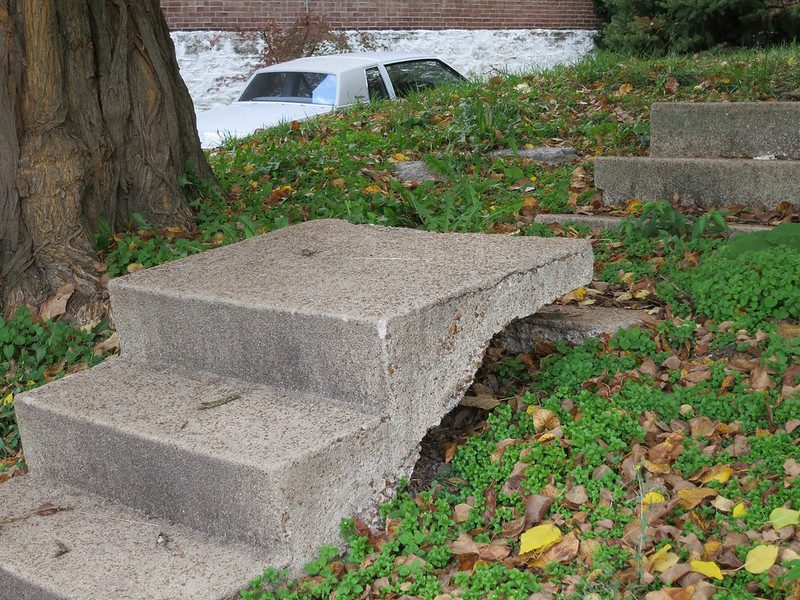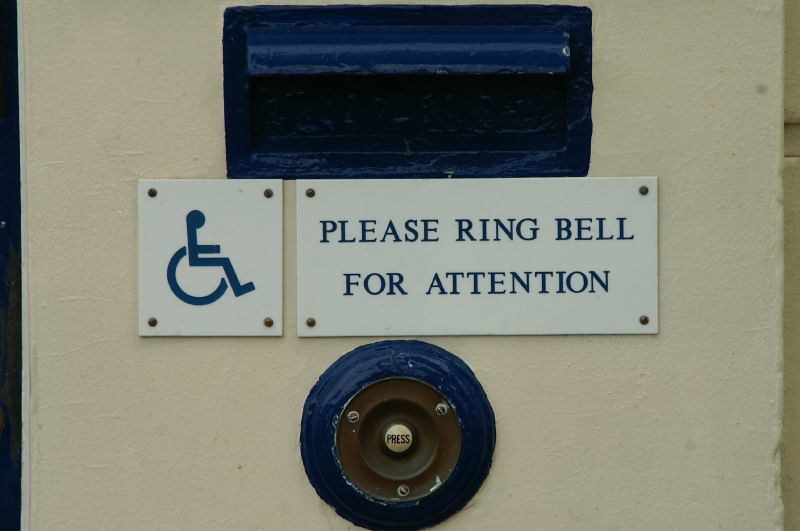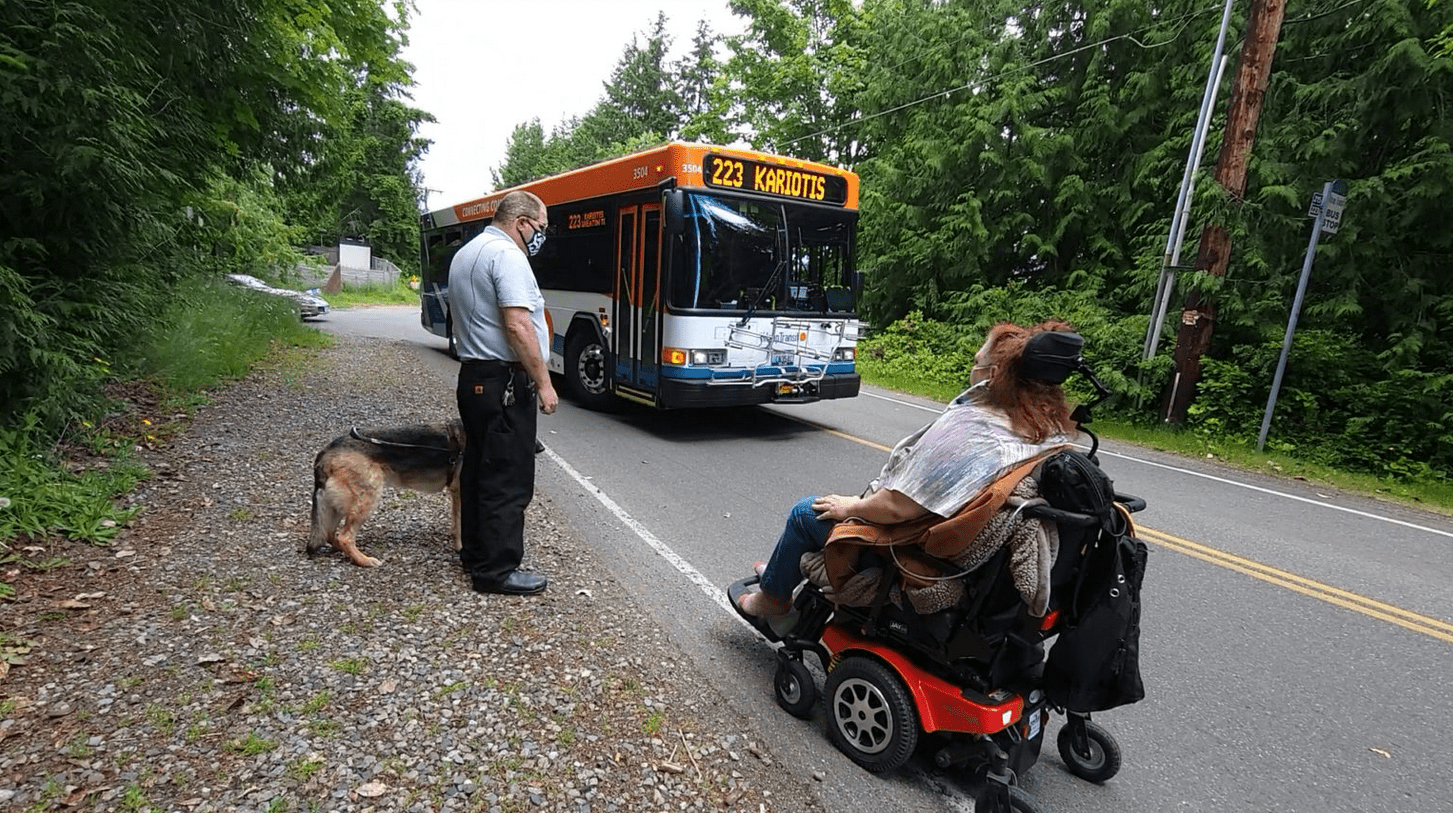This article is part of the Under the Lens series
Not Just Ramps—Disability and Housing Justice

Photo by Mathias Reding via Pexels
According to the Centers for Disease Control, nearly 7.4 million Americans have an intellectual or developmental disability (I/DD). Many of them face a daunting housing crisis. Of the few options they do have, many are settings that concentrate disabled residents together and segregate them away from the larger community.
“Once you’re in a congregate setting,” says John Maltby, “very few people sort of come out of it.” Maltby is the co-director of the New York Housing Resource Center for People with Intellectual/Developmental Disabilities (NYHRC). The organization provides resources for housing professionals in New York state and works to promote collaboration between service providers, the housing industry, and people with intellectual and developmental disabilities (I/DD) who need housing.
The Problem(s) with Institutions
According to a study from the University of Kansas, the share of people with I/DD living in publicly funded residential settings with 7 or more people decreased from 26 percent in 2009 to 14.7 percent in 2019, a welcome development to many housing advocates and disability activists who say that such large residential facilities often provide a higher level of control than is needed by many adults with I/DD, to the detriment of their autonomy and quality of life.
Group homes are congregate living facilities for those with complex health needs. While they may be necessary for individuals who require high levels of care, they have also been the site of unnecessary regulation, discomfort, and abuse for many other disabled people.
Group homes tend to severely limit the autonomy of their residents. “What a group home looks like is everybody has the same schedule,” says Laura Wells, executive director of HOPE NC, a North Carolina nonprofit is still in the early phases of development and in the process of finding land to build affordable housing for those with I/DD. “If they go on an activity or an outing, everybody in the house has to go. There’s not a lot of choice in what you do to spend your day.” Wells explains that residents often do not have a choice in who their roommates are, how to decorate their room, or when to eat meals, and likely are unable to leave on their own or invite guests over.
Residents of group homes also experience segregation from the larger community. “The only people you interact with on a daily basis” are other residents and “people who are paid to be there,” says Wells. “And that is very lonely and isolating for a lot of people.”
“Just because somebody has autism or Down syndrome, or cerebral palsy, they shouldn’t be told, ‘Well you’re going to have to live with other people with same disability as you.’ . . . I would argue strongly against having people with the same disability clustered together by their disability,” says Maltby.
According to the Autistic Self Advocacy Network, congregate environments like group homes and institutions are associated with high fixed costs and limited flexibility due to “the need to maintain buildings, staff, food service, and other such ongoing expenses.” The difficulty of adjusting service and staffing levels to an individual’s changing needs or an institution’s fluctuating resident population can also result in disruptive and costly transfers from one housing provider to another.
The housing model that Maltby and many others working in disability justice advocate for is characterized by units that are home to a mix of disabled and non-disabled residents, with communal spaces and activities where all residents can mingle. These units incorporate universal design principles regardless of whether the residents of those units are physically disabled or not, while a third-party service provider offers support to individuals who need it. This support ranges from help with cooking to more fundamental tasks such as bathing and using the toilet. It is important to remember that this housing model is geared toward individuals with I/DD with a semi-independent level of care, meaning that they do not require monitoring or care 24 hours a day, but may need assistance with a number of tasks and activities.
Developments that follow this model can vary in shape and configuration, but are united in their emphasis on accessibility, integration, and autonomy. This is in opposition to more restrictive settings— which can range from institutions of 50-plus units to smaller group homes with 3 residents—that segregate residents based on their disability and restrict the autonomy of their residents.
The Kelsey, a nonprofit housing provider based in San Francisco, follows what it calls a “disability forward” model, which focuses on three components: accessibility, affordability, and inclusion. “We put the perspective, leadership, access needs of people with all types of disabilities at the forefront of our work,” says Allie Cannington, the senior project manager of organizing and advocacy at The Kelsey. The Kelsey works to create affordable, inclusive housing communities for adults with disabilities. The organization is based in the Bay Area and was cofounded in 2012 by two cousins, one who was disabled and one who is not.
When the organization moves into a new housing market, it convenes local organizations and residents—especially those with disabilities—to get feedback and learn the needs of the local community. “Every one of our developments has a community advisory group and that’s consistent engagement throughout the development timeline,” says Cannington. People both with and without disabilities make up the organization’s staff. The Kelsey began construction on an affordable housing development named Ayer Station in 2022. The 115-unit building reserves 25 percent of its units to people with disabilities and rent ranges from $400/month for extremely low-income individuals to missing middle and essential workforce housing. In its physical design, it incorporates infrastructure for support providers such as spaces for caregivers to rest and also uses color coordination to designate different floors and areas of the building. It also features a sensory garden space that accounts for the diversity of needs and desires of people with I/DD. In its operations, the Kelsey is working on using more plain language in its documents, including leases, in order to make it easier for their residents with I/DD to understand. Ayer Station is still under construction, and is slated to open in 2024.
HOPE NC intends to set aside 25 percent of the units in its future development for adults with intellectual and developmental disabilities, and a total of 40 percent of units for adults age 55 and older. These two categories are not mutually exclusive, and all units will incorporate universal design principles to be as accessible as possible. The exact number and composition of units as well as a site for development is still in the works, but Wells says that they plan for the units to be affordable to those making between 30 percent AMI and 80 percent AMI. If HOPE NC can attain a property with enough acreage for additional single-family homes, Wells says that they would add market rate units, but their first project will likely be smaller and consist entirely of affordable rental units in one or two buildings.
HOPE NC plans to finance the development through a mixture of loans, Low Income Housing Tax Credit program, grants, and funding from the Department of Housing and Urban Development earmarked for units for those with disabilities as well as for older adult housing. The organization was originally founded by three mothers of adults with developmental disabilities. Together, they connect affordable housing developers like Preservation of Affordable Housing (POAH) with direct service providers such as the ARC of North Carolina and the Autism Society in North Carolina in order to create accessible housing for people with disabilities in the Triangle region, especially those with I/DD. They hope the housing will be finished in two to three years.
As for the number of units in accessible housing, Wells says that the sweet spot is between 60 and 80 housing units per development. “Because it’s not so big that you’re going to lose the intimacy of neighbors, but it’s not so small that you’re going to have not enough people that want to engage with each other.” However, she notes, the number of units is heavily dependent on the size of the land available, which can be quite a challenge in today’s heated housing market.
Designing for Inclusion
Some design features can be particularly supportive of people with IDD though they may not come immediately to mind. “I think one challenge we encounter is that most of the time when developers think about accessible design, there’s a very large focus on mobility disabilities,” says Gregory Robinson, the deputy director of public policy at the Autism Self-Advocacy Network. “I do think things like grab bars are still really valuable because many autistic folks do have issues with balance. That being said, there are a lot of things around sort of more particular sensory and cognitive needs.”
Some people with I/DD (and other neurodivergent people) have high sensitivity to sensory stimuli such as sound and light, so features like soundproofing and indoor air quality control and ventilation can be immensely important in ensuring their well-being. Similarly, switching out loud and/or flickering fluorescent lighting for dimmable lights can be a good practice to ensure that autistic people do not have constant auditory and visual irritants in their own home. Carpeted floors and open-concept designs for units can allow residents to safely and comfortably stim, defined as “the repetitive performance of certain physical movements or vocalizations,” often done by autistic and other neurodivergent people.
Cognitive accessibility is also important and refers to practices that remove barriers for people whose disabilities affect how they process information. This can include visual cues such as color coding or clear labeling on cabinets and doors to help individuals with I/DD more easily find what they need. Influenced by his own experience growing up with autism, Robinson personally advocates for door service and keyless entry mechanisms such as key fobs or pin pads, though he adds that accessibility looks different to each person. “When I was a teenager, I constantly locked myself out of the apartment, and then I had to wait for a family member or a neighbor to come by to let me in…so while we don’t often think about cognitive accommodations in the context of apartment design, I do try to point to things like keyless entry as a pretty key example.”
Robinson says that another area where housing providers could expand cognitive accessibility is housing application assistance. For developers that have resident services, “assisting people in both their move, forms assistance, paying rent and utilities, things like that … making sure that those processes are cognitively accessible can be really, really critical,” he says. This means writing updates and forms in clear language as well as providing multiple methods of submitting paperwork and forms, whether it’s mail, in-person, or online. “Each of those are going to lock some people out of that process and so it is important to have multiple means of applying and paying rent.”
Even things as simple as providing referrals for cleaning services can be a huge help to residents who have difficulty completing those kinds of tasks. At the Kelsey, resident services is not just about comfort, but a key component in creating inclusive and accessible housing. “We created a resident services model called the inclusion concierge,” says Cannington. “We provide resident services from when someone enters the front doors of the building, all the way to the front door of the individual unit.”
Inclusion concierges are a part of the property management team that have expertise in disability, inclusion, access, culture, and an understanding of the different services that people with disabilities need in their homes.
Communal Spaces That Actually Matter
Given that people with disabilities “tend to be more isolated [both] by the nature of their disability and also by the nature of society’s attitude towards them, anything that increases that light level of social contact is a plus, [and] reduces isolation,” says Maltby. This means developers’ designs should encourage meaningful interaction. Maltby cautions against making dedicated common spaces just for people with disabilities, and advocates for making sure that whatever common spaces are created are genuinely appealing. “If you say, ‘Here’s the room, and we’re all going to meet in this room, it’s the common room and there’s a ping pong table and two [paddles],’ that’s not going to happen.”
Instead, he stresses that common spaces should be places that all people would enjoy. “If you build an [accessible] pool, everybody goes to the pool. You could have a building with retail underneath it, a coffee shop, it gives ways for people to get work and also engages them in the community.”
Citing a design standards resource co-created by Mikiten Architecture and The Kelsey, Wells adds that the way units face each other should be considered as well, pointing out that the design of many apartment buildings is not conducive to casual social interactions. “What happens is that people go in and up the elevator . . . and into your unit and shut the door and you never see anybody else or interact on your way in. Whereas if you design apartments to have a courtyard, or porches, or gathering spaces that you pass by on your way to your unit . . . that physically promotes interaction on a regular basis.”
Meeting Caregiving Needs
Individuals with I/DD have varying levels of need, with some requiring the assistance of supportive staff. Large congregate environments employ caregivers known as direct service professionals (DSP) and often pay them very low wages. As a result, many of these homes are struggling with a labor shortage. “Nobody wants to work in the field [as a direct service professional] . . . because people are getting paid less than minimum wage here in North Carolina. They get like ten bucks an hour to do the most intimate and challenging kind of caregiving tasks. So as you can imagine, that’s not going over real well right now in the workforce shortage,” Wells says.
The situation is similar in other states. According to Maltby, “In the beginning of March, the New York State Office for People with Developmental Disabilities issued an emergency regulation amendment that said it would be permissible for providers of certified housing to increase the populations in their houses,” Maltby explains. “The state has had to take regulatory measures to enable them to double up basically . . . To me, it’s a sign that maybe your business model is a little bit off and you need to rethink how you’re doing business.”
But alternative models of caregiving do exist. One model hires neighbors, who may live in the same building or nearby, to check in on residents with I/DD. “This is particularly appealing when you have people who are themselves moderate income or low-income in multifamily buildings and who want to be nice and can now get paid for being nice,” says Maltby. In New York, where Maltby works, the stipend for a Paid Neighbor can be up to $800 a month.
The other model is called 24-hour in-home care, also known as live-in caregiving, where a paid caregiver lives in the home of the person with I/DD. The arrangement is set up by a service providing agency that acts as the caregiver’s employer and pays their wages. The caregiver lives rent-free with the person with I/DD and is there to provide support when needed. In addition to free rent, they are paid an additional wage for their caregiving services, and if they start to provide specific regular daily living services to the person they are living with, such as helping them get dressed or bathe or eat, then they’re paid additionally for that work as well. “The other kicker is that if they do that work and they are living there while working, the income from that work is tax exempt,” Maltby says.
Housing providers should also strive to keep service separate from housing. “The group home model is that generally the home is owned or controlled by a nonprofit [housing] provider agency that also provides [supportive] services,” says Maltby. “And the dilemma there is that if you like the services but you don’t like where you’re living, well that’s too bad because the services are tied to the place. And if you don’t like your services but you like where you’re living, that’s too bad because the services are tied to the place.”
The Autistic Self Advocacy Network writes in one policy brief that “states should not invest in models that link service-provision and real estate and instead invest in models that decouple services from housing providers.”
“One important thing that you get out of decoupling them is ensuring that the services meet the needs of the individual,” says Robinson. “There are robust health benefits from community-based living, having interfacing with the community, having control of your setting, those are all really valuable things. We have a very robust public health literature supporting the idea that when people have control over their life circumstances, they are healthier.” Robinson cites the National Core Indicators, a multi-state program that provides a systemic approach to performance and outcome measurements for state intellectual and developmental disability systems. According to its surveys, people with I/DD living in institutional settings report less autonomy, and less satisfaction.
HOPE NC plans to follow this model as it develops its own integrated supportive housing. Though the organization is still in the early phases of development, Wells says that the developer will not be the one providing caregiving services. Instead, staff will be on site to provide service referrals to third-party service organizations for residents. HOPE NC, like many other integrated community housing developments, will not mandate that incoming residents receive any specific level of caregiving. “We can’t infringe upon people’s rights to force them to get services that they are not interested in,” says Wells. For her, it’s a matter of autonomy.
“In our society, oftentimes we treat people with IDD as children,” she says. “As parents, we tell our children when they should eat, when they should go to bed . . . and what they should do. And when our children get to be adults, they get to make those decisions themselves. People with IDD can make choices [too] . . . and [should] have that ability to determine their lives in the way that they can.”
|
Help keep us strong by becoming a Shelterforce supporter. |






Great article, but with one troubling false sentence:
“this housing model is geared toward individuals with I/DD with a semi-independent level of care, meaning that they do not require monitoring or care 24 hours a day”
Many advocates strongly disagree, including one of those quoted in the article, John Maltby. In fact, alternative housing models as described in the article can work for a much wider range of people, including those who require 24/7 monitoring and care. When we start setting limits on who is ‘allowed’ to participate in the community, we start down a slippery slope.
My son is low IQ and micro-cephalic. A generation ago the orthodoxy would viewed him as un-trainable, and he would have been relegated to an institution. Today, he lives in an apartment in Queens with a paid care-giver, and travels familiar routes on the NYC subway system to get to his job at Trader Joe’s in Brooklyn and to his running club in Manhattan.